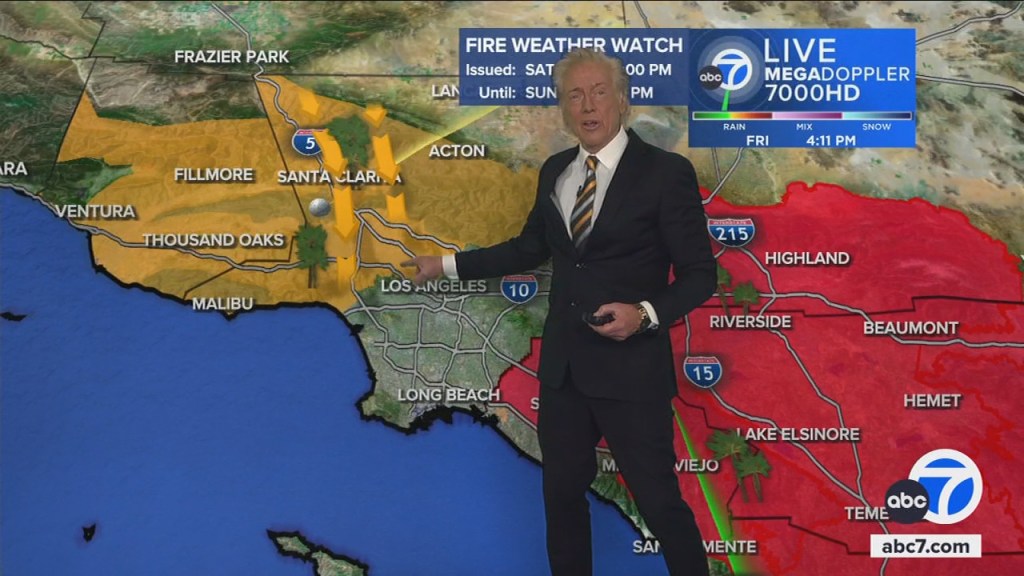Understanding the L.A. Wildfire Crisis: Insights from Dallas Raines on Prevention and Community Action
The recent spate of wildfires in Los Angeles has left communities reeling, sparking a conversation around prevention and community resilience. Dallas Raines, the esteemed meteorologist from ABC7, offers his extensive knowledge to help unravel this crisis. Understanding the factors that contribute to these devastating fires is crucial, as is identifying actionable steps that communities can take to mitigate future risks. This article delves into Raines’ insights and emphasizes the importance of awareness and collaboration in creating a safer tomorrow.
Factors Contributing to the L.A. Wildfire Crisis
To comprehend the wildfire crisis in Los Angeles, one must first consider the environmental, climatic, and human factors at play. Several key elements contribute to the increasing frequency and intensity of wildfires:
- Climate Change: Rising temperatures and prolonged drought conditions have created an environment where wildfires can flourish. According to the California Department of Forestry and Fire Protection, the state has experienced an increase in average temperatures by about 2°F over the last century, resulting in drier landscapes.
- Vegetation Management: The accumulation of dry brush and dead trees serves as a potent fuel source for wildfires. Raines emphasizes the importance of maintaining clear zones around properties and implementing controlled burns to reduce fuel load.
- Urban Development: As urban areas expand into wildland-urban interfaces, the risk of fires spreading to residential neighborhoods increases. This encroachment not only puts more lives at risk but also complicates firefighting efforts.
- Human Activity: Many wildfires are ignited by human actions, whether intentional or accidental. From discarded cigarettes to fireworks, understanding these ignition sources is essential for prevention.
Insights from Dallas Raines: Weather Patterns and Predictions
Dallas Raines has dedicated much of his career to studying weather patterns and their implications for wildfire behavior. His insights into meteorological phenomena are invaluable in understanding how weather influences fire risk.
Understanding Santa Ana Winds
One of the critical factors Raines points out is the Santa Ana winds, which are notorious for their role in wildfire outbreaks. These strong, dry winds can carry flames quickly and unpredictably, making them a significant concern during fire season. Raines explains that a combination of low humidity and high winds creates a perfect storm for wildfires to ignite and spread.
Utilizing Technology for Predictions
Raines advocates for the use of advanced technology and data analysis to predict fire behavior. Tools such as satellite imagery and real-time weather monitoring systems can provide crucial information to firefighters and emergency responders. By utilizing these technologies, communities can better prepare for potential wildfire threats.
Community Action: Steps Towards Prevention
While understanding the causes of wildfires is essential, taking proactive steps at the community level is equally important. Raines emphasizes that community action can significantly reduce the risk of wildfires. Here are some actionable steps communities can take:
- Fire Safety Education: Organizing workshops and informational sessions can help residents understand fire safety measures. Education on creating defensible space around homes and proper evacuation plans are key components of these initiatives.
- Neighborhood Collaboration: Building relationships with neighbors fosters a sense of community and collective responsibility. Residents can work together to clear brush and maintain fire-safe zones.
- Involvement in Local Fire Programs: Communities should engage with local fire departments and participate in programs designed to promote wildfire awareness and prevention strategies.
- Advocating for Policy Change: Residents can play a vital role in advocating for policies that promote sustainable land use and vegetation management. Engaging with local government can lead to more effective wildfire management practices.
Creating a Culture of Preparedness
In the face of the growing wildfire crisis, fostering a culture of preparedness is essential. Raines believes that communities need to shift their mindset from reactive to proactive. Here are some strategies to instill a culture of preparedness:
- Regular Drills: Conducting fire drills and evacuation simulations can help residents understand what to do in an emergency. Familiarity with escape routes and safety protocols can save lives.
- Emergency Kits: Encouraging residents to prepare emergency kits that include essential supplies such as water, non-perishable food, and first-aid items can enhance community resilience.
- Communication Plans: Establishing clear communication channels within neighborhoods ensures that residents can stay informed during emergencies. Utilizing social media and local apps for updates can be highly effective.
Conclusion: A Call to Action
The wildfire crisis in Los Angeles is a complex issue that requires a multifaceted approach. Insights from Dallas Raines highlight the significance of understanding the factors contributing to these disasters and the need for community action. By fostering awareness, collaboration, and a culture of preparedness, communities can empower themselves to face the challenges posed by wildfires.
While the threat of wildfires is real, it’s essential to remain optimistic. Through education, community engagement, and proactive measures, we can pave the way for a safer tomorrow. The time for action is now, and together, we can mitigate the risks associated with wildfires and protect our homes and loved ones.
See more Your Daily Weather



